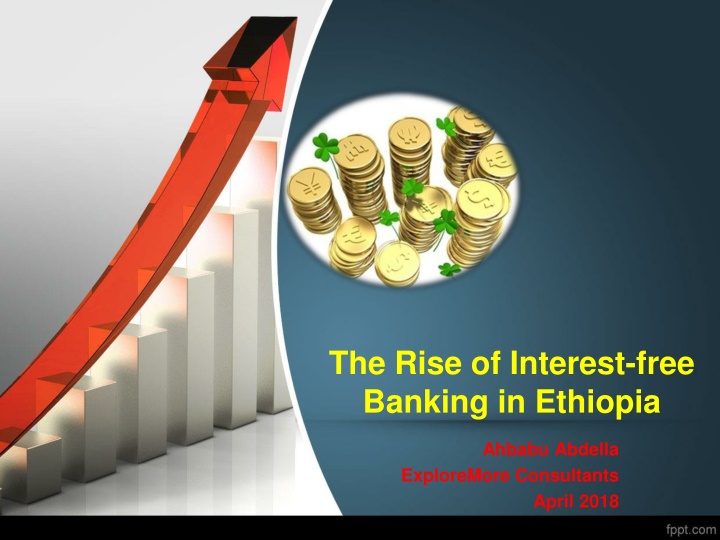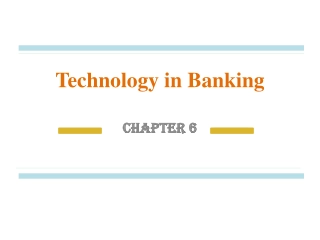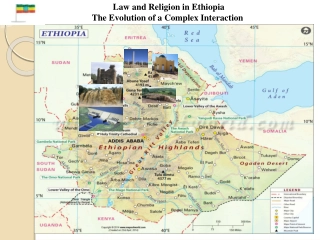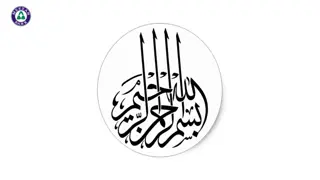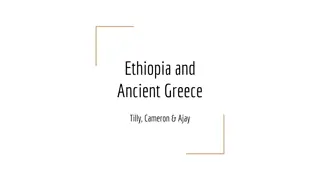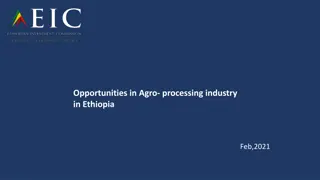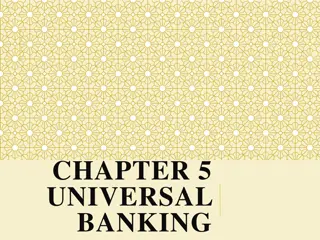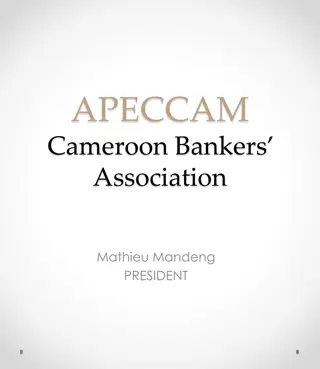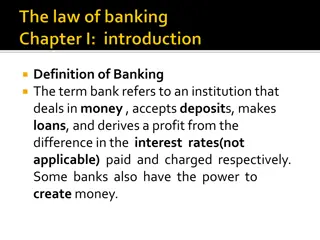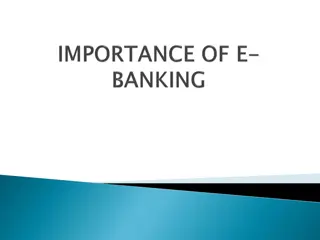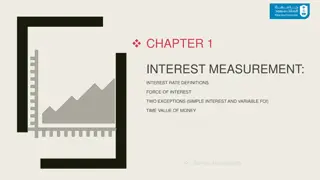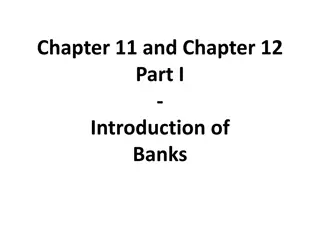The Rise of Interest-free Banking in Ethiopia: Opportunities and Challenges
Ethiopia's banking industry is evolving towards interest-free banking, presenting opportunities and challenges for the nation's economic growth. With a history rich in diverse religions and a recent focus on economic development, Ethiopia aims to transform into a manufacturing hub while addressing inflation and balance of payment issues. Explore the potential and obstacles in this transition.
Download Presentation

Please find below an Image/Link to download the presentation.
The content on the website is provided AS IS for your information and personal use only. It may not be sold, licensed, or shared on other websites without obtaining consent from the author.If you encounter any issues during the download, it is possible that the publisher has removed the file from their server.
You are allowed to download the files provided on this website for personal or commercial use, subject to the condition that they are used lawfully. All files are the property of their respective owners.
The content on the website is provided AS IS for your information and personal use only. It may not be sold, licensed, or shared on other websites without obtaining consent from the author.
E N D
Presentation Transcript
The Rise of Interest-free Banking in Ethiopia Ahbabu Abdella ExploreMore Consultants April 2018
Contents 1. Introduction 2. Banking industry in Ethiopia 3. Interest-free banking in Ethiopia: Opportunities Prospects Challenges 4. The way forward 3
1. Introduction Ethiopia is located in the Horn of Africa sharing borders with Eritrea, Djibouti, Som- alia, Sudan, South Sudan, and Kenya. It is the second most populous nation in Africa with more inhabitants. The population is forecasted to grow to over 210 million by 2060. than 100 million 4
Introduction (cond) Historically, Ethiopia hosts all three of the world's major Abrahamic religions. Islam accounts as almost 50% of the total population. Additionally, Ethiopia is the site of the first Hijra during the reign of Ashama ibn Abjar in 614 AD. 6
Introduction (cond) As per the IMF report, Ethiopia had been registering over 10% economic growth from 2004 through 2009 entitled to be as one of the fastest growing economies in the world. In the years 2007 and 2008, it was the fastest- growing non-oil-dependent African economy. 7
Introduction (cond) World Bank highlighted that Ethiopia had witnessed rapid economic growth with real domestic product (GDP) growth averaging 10.5% between 2005 and 2016 compared to a regional average of 5.4%. However, starting from 2011 there has been high inflation surge and difficult balance of payments. 8
Introduction (cond) In 2012, Ethiopian government implemented tight monetary and fiscal policies as it is executing the 2nd phase of its Growth and Transformation Plan (GTP II). GTP II, which will run to 2019/20, aims to continue work on through public investment projects, and to transform Ethiopia into a manufacturing hub. physical infrastructure 9
Introduction (cond) Growth targets are an annual average GDP growth of 11%; in line with manufacturing strategy, it also hopes the industrial sector will grow by an average of 20%, creating jobs. Ethiopia targets to reach lower-middle-income status by 2025. 10
2. Banking industry in Ethiopia The first bank, the Bank of Abyssinia , was established in 1905 based on the agreement signed between the Ethiopian Government and the National Bank of Egypt, which was owned by the British. During the reign of Emperor Haile Selassie, the State Bank of Ethiopia was established in 1943 with a capital of 1 mill. Maria Theresa Dollars. 11
Banking industry (cond) In 1963, the State Bank of Ethiopia split into the National Bank of Ethiopia and the Commercial Bank of Ethiopia S.C. with the purpose of segregating the functions of central banking from those of commercial banking. Besides the two state owned banks, currently there are 16 private banks operating in Ethiopia. 12
Banking industry (cond) Back in 2013, pan-African financial services provider Ecobank unbanked population to be around 80 million people. However, a large population which will become gradually employment over the years ahead will drive the banking sector. estimated Ethiopia s involved in formal 13
Banking industry (cond) According to Business Monitor International (BMI) latest report on banking industry of Ethiopia, Ethiopia s sector has shown a steady expansion over 2017, with both loan and deposit growth continuing on a strong upward trend. commercial banking 14
Banking industry (cond) It is further noted that loans will continue to post double-digit growth over a multi-quarter time horizon as the economy diversifies away from agriculture industrialization. Hence, The banking sector will benefit from boosting industry and increasing integration of the sizable unbanked population. to agricultural-led 15
3. IFB in Ethiopia Islam is the world s second largest religion with more than 1.8 billion followers, making up roughly 24% of the world s population. Around half of Ethiopians identify as Muslim, making the country s Muslim population larger than that in Saudi Arabia, Syria or Yemen. 16
IFB in Ethiopia (cond) Access to finance in Ethiopia is generally very low. Nationally, only 14% of the adult population has access to formal credit and savings products but this rate drops to 1% in rural areas. And, until recently, there were no financial institutions catering to the large population requiring Islamic-compliant products. 17
IFB in Ethiopia (cond) The Ethiopia s conservative central bank permitted IFB window service in 2013 after barring the banking initiated in 2011. Among the 18 both private and state owned, 10 of them have started IFB. In addition, only 2 of them fully segregated their funds and corresponding conventional system. full-fledged Islamic systems from their 18
IFB in Ethiopia (cond) Unlike Ethiopia, Kenya, with a much smaller Muslim population, has 3 Islamic banks, as well as an Islamic insurance company. Moreover, five conventional banks offer sharia-compliant dedicated Islamic windows. products through 19
IFB in Ethiopia: Opportunities Ethiopian Muslim population is almost very practicing and strictly principles. The society believes banking is against Sharia laws so that a good number of potential customers are not banking with the conventional banks. observes Sharia that conventional 20
Opportunities (cond) Banks with interest-free window services are collecting unexpected deposits from their customers. This shows that there is an untapped market in the industry. It becomes a do-or-die option for the Muslim community since they are struggling without inclusive finance system. high amount of 21
IFB in Ethiopia: Prospects For the achievement of a holistic economic growth of a state, government should develop inclusive policies. It is noticed that government is changing its stance and extending a hand for the expansion of IFB services. Hence, the sector is expected to contribute a lot for the development of a country. 22
IFB in Ethiopia: Challenges The major challenge is regulatory framework; IFB window is subject to the same regulations applicable to conventional banks. Though the government is showing a positive interest on the sector, regulatory framework for IFB is far beyond expected. working on the 23
Challenges (cond) Despite a dire need of IFB, the society is skeptical of the services because of its high sensitivity on the issue. The society prefers a full-fledged banking distinct to the conventional banking. 24
Challenges (cond) Competent and well trained professionals on IFB are indispensable to the sector as it needs maximum caution to comply with Sharia. However, there is no formal education in the country on Islamic banking and economics in universities and colleges. 25
Challenges (cond) There is high shortage of sharia scholars who can comprehend both the fiqh and the reality of the banking industry. Besides, different banks sharia advisers on acceptability of different products leads to standardization problem. interpretations among 26
4. Way forward Due to the unique nature of the sector, mutual efforts ought to be contributed from different stakeholders to push for a separate regulations. A broad awareness creation works on the public to promote the poor understanding regarding the sector is also expected. 27
Way forward (cond) There should be institutions addressing a formal educations and trainings on Islamic banking and economics. It is recommended that a central sharia advisory board to be formed by the banks functioning on IFB to mitigate the shortage of scholars and standardization problems. 28
Way forward (cond) To enjoy the opportunity of unexploited Muslim population, Islamic banking services and micro-finances should be promoted in rural communities, Ethiopia s population. which host 70% of 29
